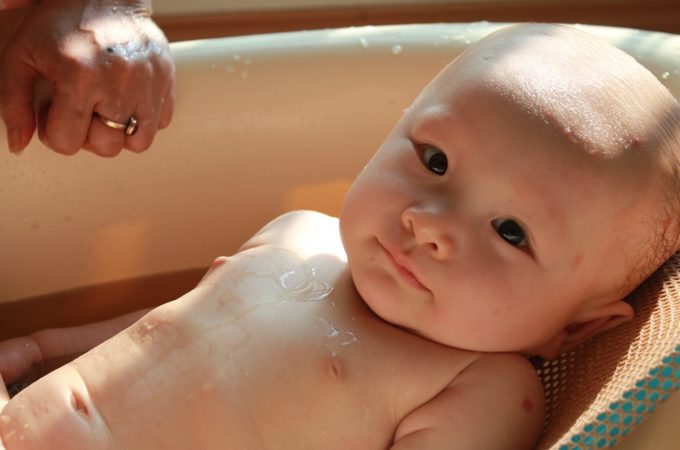Bath time. Let’s face it – Babies are messy! Between poopy diapers and getting food in their hair, nose, and anywhere but their mouth during meal-times it feels like it’s always bath time! So let’s talk about some ways that you can make bath time enjoyable for yourself, fun for your baby and boost development at the same time. As children get older and move into the toddler phase it becomes easier to view bath time as play time. But what can you do with your infants during bath time to make it playful and support their development of communication, social emotional capacities and motor skills? Over the next couple of weeks we will share ideas with you to elevate bath time with baby! We’ll also break down how some of the games you might already be playing during bath time are supporting your child’s development. Here is our first suggestion…
Put on some music!
If you’re not into kiddy music play your favourite songs – a little Taylor Swift, some Aretha Franklin, Salsa or even some Kanye will be great to splash around to! Research has shown that it’s more about the rhythm of the song and enjoyment you express during the interaction than about the lyrics when interacting with really little ones. That being said, feel free to change up the lyrics to the songs to match what you’re doing if you’re feeling creative. One of my favorite songs to sing with my daughter is to the tune of ‘shake your booty’ and we’ll sing ‘splash, splash, splash – splash the water’ or ‘scrub, scrub, scrub – scrub your toes’. The important thing is to have fun! If you’re truly enjoying yourself, your child will be able to sense that and will more easily be able to share in the excitement with you.
While using music and playing with your baby during bath time you will be working on different aspects of child development. We break it down for you below.
Support communication:
- To lay the foundation for teaching a child about the turn taking nature of communication, you can exchange smiles and glances with your child and model the predictable rhythm of communication while singing.
- Since using actions and gestures is important for learning to talk, parents can model the use of gestures and incorporate actions while singing to encourage their child to also use gestures to communicate.
- We can also model some ‘bath time’ vocabulary (water, splash, scrub, toes, warm etc.)
Support social emotional skills:
- Music can be part of a bath time routine and can provide comfort during bath time. It is reassuring for babies when they can draw from the predictability and comfort of a familiar routine.
- To support regulation during bath-time, parents can “attune” music to best fit how their baby is acting in-the-moment, by adjusting the speed, intensity, or volume of the song. For example as a baby starts smiling and splashing about, we might speed up the song we are singing and when the baby has a puzzled look on their face we might quiet our singing voices and slow down the music.
Support physical development:
- Incorporate actions and movement into your songs. Your baby will be visually following your movements (keep your movements large and not too quick particularly for young infants).
- To work on building some neck strength and core stability you can model the actions slightly above your child’s eye level to encourage them to look upwards to see your actions.
- You can also help your baby participate in the actions by gently moving their arms or legs to the rhythm of the music. Think about simple movements such as reaching up, down, out to the side, crossing arms or kicking legs.
Next week we will talk more about babies and bath time. In the meantime we’d love to hear from you. Do you use music to play with your little one during bath time? What are some of your favorite songs to incorporate into bath time?
—
Amanda & Eunice



